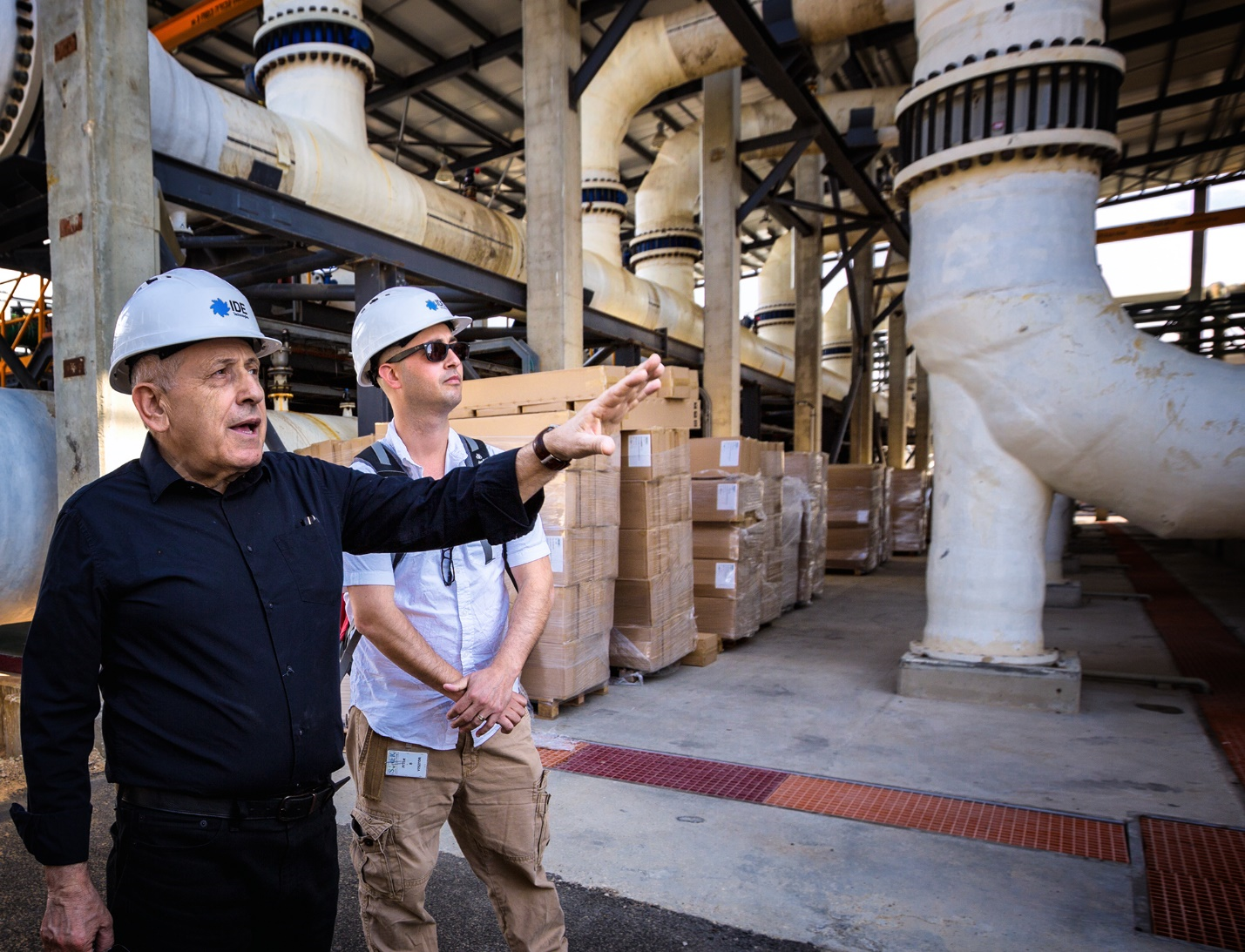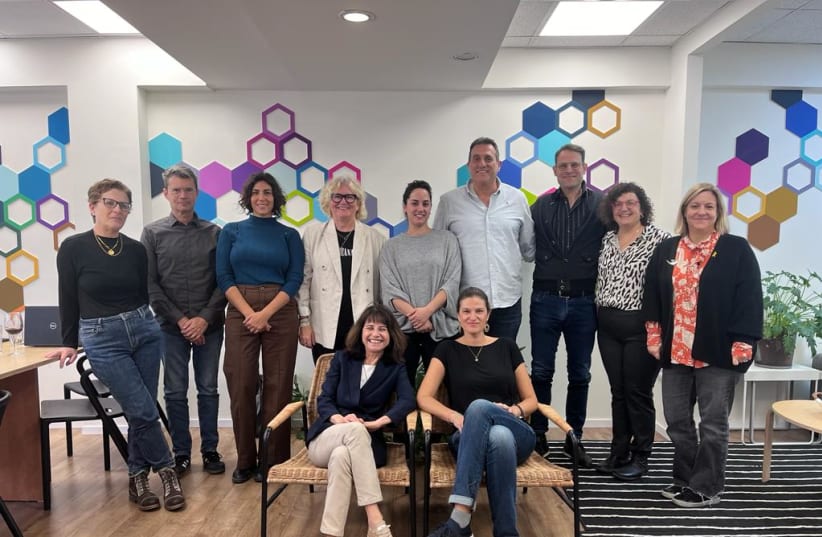
The Role of Desalination on a Thirsty Planet
The Role of Desalination on a Thirsty Planet
July 14, 2016
Earthzine — With 7.4 billion thirsty people living on Earth today, coupled with our dependence on water-intensive technologies and a world that is experiencing rapid anthropogenic aridification, we may be bumping up against our water capacity.
So, perhaps it’s not surprising that the harnessing of technology to increase the supply of water is most developed in Israel, a technologically advanced society in the desert.
Less than 10 miles south of Tel Aviv and separated from the Mediterranean Sea by a thin stretch of sand dunes, sits the Sorek Desalination Plant.

BGU water researcher Dr. Edo Bar-Zeev (right) at the Sorek Desalination Plant with Dr. Boris Liberman, vice president and chief technology officer at IDE Technologies Ltd. (Photo: Osha Gray Davidson)
With a potable water output capacity of 624,000 cubic meters a day (164,843,361 gallons), it is the world’s largest seawater desalination plant. Completed in 2013 at a cost of about $500 million, Sorek today produces 30 percent of Israel’s total water demand, says Dr. Oren Bar-Zeev, a senior lecturer at BGU’s Zuckerberg Institute for Water Research.
It is the first reverse-osmosis desalination plant to use vertically mounted 16-inch membranes – twice the size of the largest previous ones. This combination of increased size and vertical mounting increases the water flow rate at Sorek by 4.3 times, using the same amount of pressure.
In the 10 minutes it takes for water to pass through membrane tubes at Sorek, the majority of the salt is removed. The membranes also remove the remaining organic matter from the water.
This is a necessary step, but one that creates one of the key problems in desalination: the deposition of bacteria and other matter that form a thin layer of cells on the membrane surface. This biofilm dramatically reduces the rate at which the water flows through the desalination process.
“Biofouling,” says Dr. Bar-Zeev, “is the Achilles heel of membranes.”
To force the water through a membrane with a mat of bacteria, algae and various polymers, requires increased pressure, which translates into increased energy costs. The initial sand filtration reduces the formation of the biofilm, but says Dr. Bar-Zeev, “Even with pre-treatment, biofouling will develop over time.”
A microbiologist by training, Dr. Bar-Zeev and his colleagues are working to develop innovative solutions to slow the formation of biofilms and to clean the membranes without using harsh chemicals. “The best solution to overcoming any biologically created problem,” he says, “should be biology.”
Although Bar-Zeev isn’t ready to announce any breakthroughs quite yet, promising techniques include programming bacteria to react differently to their environment and adding nanoparticles to membranes that would act as biocides.
“Finding ways to clean the membranes, quickly and cheaply, is critical to expanding desalination,” says Dr. Bar-Zeev.
This post is excerpted from a story by Osha Gray Davidson, who participated in Americans for Ben-Gurion University’s 2016 Murray Fromson Media Mission.



